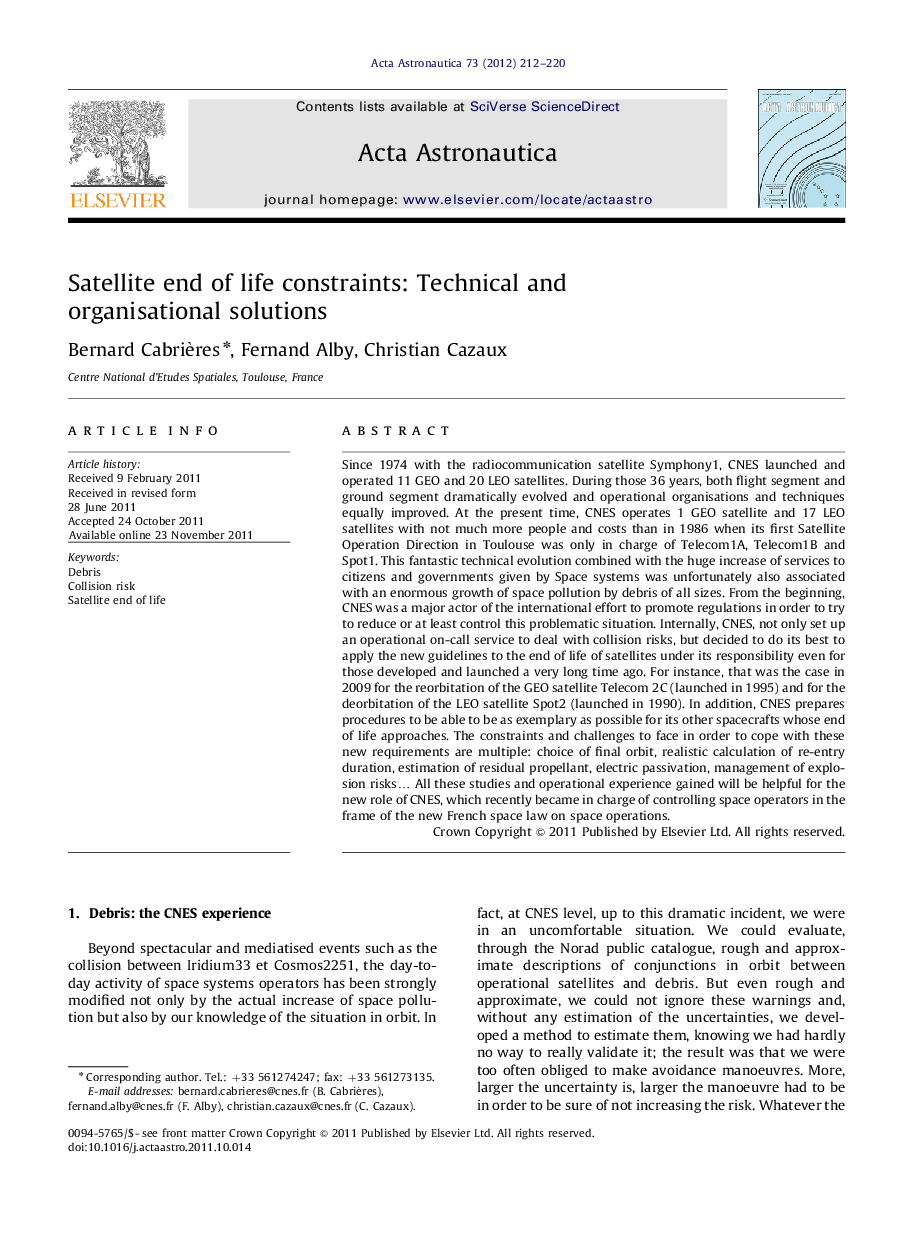| کد مقاله | کد نشریه | سال انتشار | مقاله انگلیسی | نسخه تمام متن |
|---|---|---|---|---|
| 1715363 | 1519975 | 2012 | 9 صفحه PDF | دانلود رایگان |

Since 1974 with the radiocommunication satellite Symphony1, CNES launched and operated 11 GEO and 20 LEO satellites. During those 36 years, both flight segment and ground segment dramatically evolved and operational organisations and techniques equally improved. At the present time, CNES operates 1 GEO satellite and 17 LEO satellites with not much more people and costs than in 1986 when its first Satellite Operation Direction in Toulouse was only in charge of Telecom1A, Telecom1B and Spot1. This fantastic technical evolution combined with the huge increase of services to citizens and governments given by Space systems was unfortunately also associated with an enormous growth of space pollution by debris of all sizes. From the beginning, CNES was a major actor of the international effort to promote regulations in order to try to reduce or at least control this problematic situation. Internally, CNES, not only set up an operational on-call service to deal with collision risks, but decided to do its best to apply the new guidelines to the end of life of satellites under its responsibility even for those developed and launched a very long time ago. For instance, that was the case in 2009 for the reorbitation of the GEO satellite Telecom 2C (launched in 1995) and for the deorbitation of the LEO satellite Spot2 (launched in 1990). In addition, CNES prepares procedures to be able to be as exemplary as possible for its other spacecrafts whose end of life approaches. The constraints and challenges to face in order to cope with these new requirements are multiple: choice of final orbit, realistic calculation of re-entry duration, estimation of residual propellant, electric passivation, management of explosion risks… All these studies and operational experience gained will be helpful for the new role of CNES, which recently became in charge of controlling space operators in the frame of the new French space law on space operations.
Journal: Acta Astronautica - Volume 73, April–May 2012, Pages 212–220